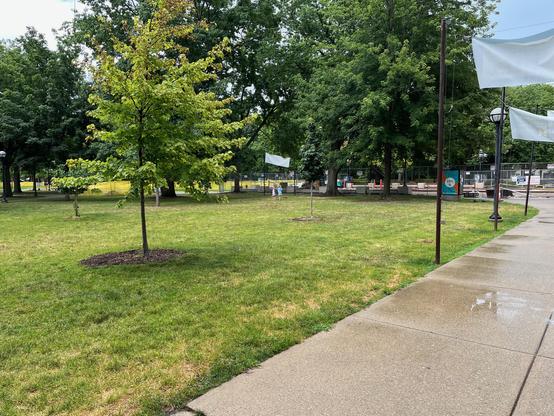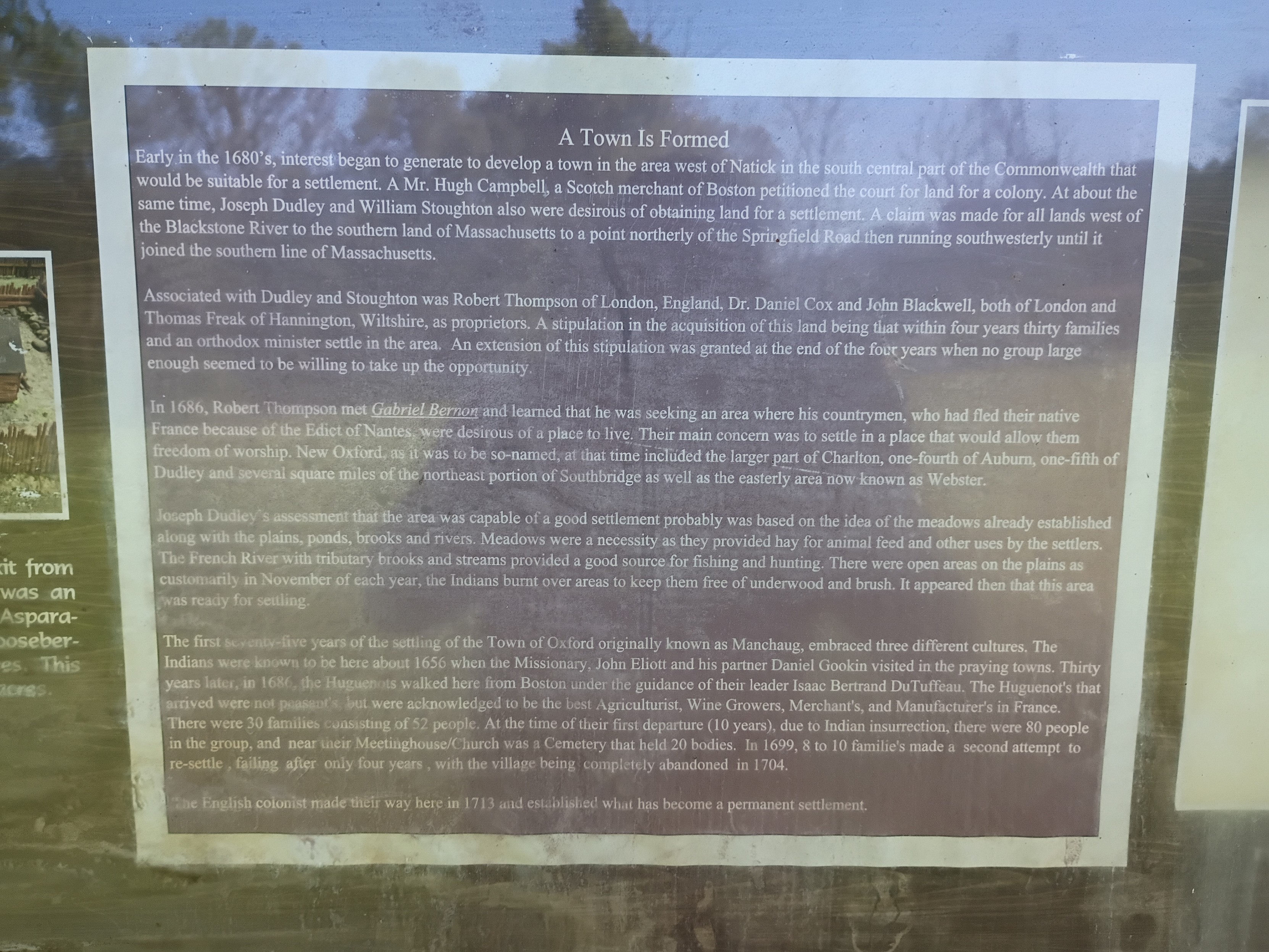2025-07-24 06:06:01
#Blakes7 Series B, Episode 07 - Killer
TYNUS: Nervous?
AVON: Just careful.
TYNUS: We've just received this odd message. I think it's from your friends on the Liberator.
https://blake.torpidity.net/m/207/128
2025-06-18 10:36:21
Open Letter to CRL from the academic wing of #CripLib - ACRLog
https://acrlog.or…
2025-07-17 18:07:52
i was put in charge of three grandchildren for a few hours yesterday so we headed straight to ben & jerry's to split a milkshake, then explored the state theater (and even sneaked into a movie but later got thrown out for horsing around on the escalator), then i gave a nickel tour of angell/mason/haven halls, then they chased squirrels on the diag which took longer than you might think, then we looked in all the windows in nickels arcade. it all went slowly and well.
2025-07-04 20:14:31
Long; central Massachusetts colonial history
Today on a whim I visited a site in Massachusetts marked as "Huguenot Fort Ruins" on OpenStreetMaps. I drove out with my 4-year-old through increasingly rural central Massachusetts forests & fields to end up on a narrow street near the top of a hill beside a small field. The neighboring houses had huge lawns, some with tractors.
Appropriately for this day and this moment in history, the history of the site turns out to be a microcosm of America. Across the field beyond a cross-shaped stone memorial stood an info board with a few diagrams and some text. The text of the main sign (including typos/misspellings) read:
"""
Town Is Formed
Early in the 1680's, interest began to generate to develop a town in the area west of Natick in the south central part of the Commonwealth that would be suitable for a settlement. A Mr. Hugh Campbell, a Scotch merchant of Boston petitioned the court for land for a colony. At about the same time, Joseph Dudley and William Stoughton also were desirous of obtaining land for a settlement. A claim was made for all lands west of the Blackstone River to the southern land of Massachusetts to a point northerly of the Springfield Road then running southwesterly until it joined the southern line of Massachusetts.
Associated with Dudley and Stoughton was Robert Thompson of London, England, Dr. Daniel Cox and John Blackwell, both of London and Thomas Freak of Hannington, Wiltshire, as proprietors. A stipulation in the acquisition of this land being that within four years thirty families and an orthodox minister settle in the area. An extension of this stipulation was granted at the end of the four years when no group large enough seemed to be willing to take up the opportunity.
In 1686, Robert Thompson met Gabriel Bernor and learned that he was seeking an area where his countrymen, who had fled their native France because of the Edict of Nantes, were desirous of a place to live. Their main concern was to settle in a place that would allow them freedom of worship. New Oxford, as it was the so-named, at that time included the larger part of Charlton, one-fourth of Auburn, one-fifth of Dudley and several square miles of the northeast portion of Southbridge as well as the easterly ares now known as Webster.
Joseph Dudley's assessment that the area was capable of a good settlement probably was based on the idea of the meadows already established along with the plains, ponds, brooks and rivers. Meadows were a necessity as they provided hay for animal feed and other uses by the settlers. The French River tributary books and streams provided a good source for fishing and hunting. There were open areas on the plains as customarily in November of each year, the Indians burnt over areas to keep them free of underwood and brush. It appeared then that this area was ready for settling.
The first seventy-five years of the settling of the Town of Oxford originally known as Manchaug, embraced three different cultures. The Indians were known to be here about 1656 when the Missionary, John Eliott and his partner Daniel Gookin visited in the praying towns. Thirty years later, in 1686, the Huguenots walked here from Boston under the guidance of their leader Isaac Bertrand DuTuffeau. The Huguenot's that arrived were not peasants, but were acknowledged to be the best Agriculturist, Wine Growers, Merchant's, and Manufacter's in France. There were 30 families consisting of 52 people. At the time of their first departure (10 years), due to Indian insurrection, there were 80 people in the group, and near their Meetinghouse/Church was a Cemetery that held 20 bodies. In 1699, 8 to 10 familie's made a second attempt to re-settle, failing after only four years, with the village being completely abandoned in 1704.
The English colonist made their way here in 1713 and established what has become a permanent settlement.
"""
All that was left of the fort was a crumbling stone wall that would have been the base of a higher wooden wall according to a picture of a model (I didn't think to get a shot of that myself). Only trees and brush remain where the multi-story main wooden building was.
This story has so many echoes in the present:
- The rich colonialists from Boston & London agree to settle the land, buying/taking land "rights" from the colonial British court that claimed jurisdiction without actually having control of the land. Whether the sponsors ever actually visited the land themselves I don't know. They surely profited somehow, whether from selling on the land rights later or collecting taxes/rent or whatever, by they needed poor laborers to actually do the work of developing the land (& driving out the original inhabitants, who had no say in the machinations of the Boston court).
- The land deal was on condition that there capital-holders who stood to profit would find settlers to actually do the work of colonizing. The British crown wanted more territory to be controlled in practice not just in theory, but they weren't going to be the ones to do the hard work.
- The capital-holders actually failed to find enough poor suckers to do their dirty work for 4 years, until the Huguenots, fleeing religious persecution in France, were desperate enough to accept their terms.
- Of course, the land was only so ripe for settlement because of careful tending over centuries by the natives who were eventually driven off, and whose land management practices are abandoned today. Given the mention of praying towns (& dates), this was after King Phillip's war, which resulted in at least some forced resettlement of native tribes around the area, but the descendants of those "Indians" mentioned in this sign are still around. For example, this is the site of one local band of Nipmuck, whose namesake lake is about 5 miles south of the fort site: #LandBack.
2025-07-14 11:32:47
One of the problems with vibe coding is that the hardest part of software engineering is not writing the code, rather it's *choosing* what to code, and designing the system (and, later on, maintaining the code/operations/etc)
The barriers and investment cost to writing code is itself a *desirable* aspect of software engineering because it forces you to make careful, good choices before you invest in building something
Because the majority of the time spent writing, say, curl,…
2025-07-19 08:14:41
AI, AGI, and learning efficiency
An addendum to this: I'm someone who would accurately be called "anti-AI" in the modern age, yet I'm also an "AI researcher" in some ways (have only dabbled in neutral nets).
I don't like:
- AI systems that are the product of labor abuses towards the data workers who curate their training corpora.
- AI systems that use inordinate amounts of water and energy during an intensifying climate catastrophe.
- AI systems that are fundamentally untrustworthy and which reinforce and amplify human biases, *especially* when those systems are exposed in a way that invites harms.
- AI systems which are designed to "save" my attention or brain bandwidth but such my doing so cripple my understating of the things I might use them for when I fact that understanding was the thing I was supposed to be using my time to gain, and where the later lack of such understanding will be costly to me.
- AI systems that are designed by and whose hype fattens the purse of people who materially support genocide and the construction of concentration campus (a.k.a. fascists).
In other words, I do not like and except in very extenuating circumstances I will not use ChatGPT, Claude, Copilot, Gemini, etc.
On the other hand, I do like:
- AI research as an endeavor to discover new technologies.
- Generative AI as a research topic using a spectrum of different methods.
- Speculating about non-human intelligences, including artificial ones, and including how to behave ethically towards them.
- Large language models as a specific technique, and autoencoders and other neural networks, assuming they're used responsibly in terms of both resource costs & presentation to end users.
I write this because I think some people (especially folks without CS backgrounds) may feel that opposing AI for all the harms it's causing runs the risk of opposing technological innovation more broadly, and/or may feel there's a risk that they will be "left behind" as everyone else embraces the hype and these technologies inevitability become ubiquitous and essential (I know I feel this way sometimes). Just know that is entirely possible and logically consistent to both oppose many forms of modern AI while also embracing and even being optimistic about AI research, and that while LLMs are currently all the rage, they're not the endpoint of what AI will look like in the future, and their downsides are not inherent in AI development.
2025-07-18 09:32:32
Comparing astrophysical models to gravitational-wave data in the observable space
Alexandre Toubiana, Davide Gerosa, Matthew Mould, Stefano Rinaldi, Manuel Arca Sedda, Tristan Bruel, Riccardo Buscicchio, Jonathan Gair, Lavinia Paiella, Filippo Santoliquido, Rodrigo Tenorio, Cristiano Ugolini
https://arxiv.org/abs/2507.13249






